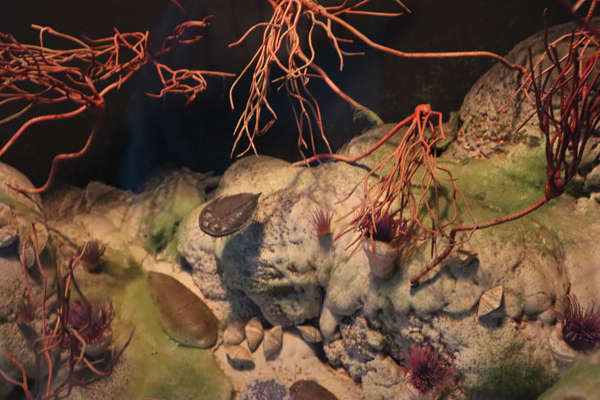On the Cusp of the Phanerozoic
On the Cusp of the Phanerozoic (Visible Life)
Geological time is divided into a number of specific segments. Most people are familiar with terms such as the Cretaceous and Jurassic. A few may have heard of the Devonian and Silurian but not many can put these periods (for that is what they are) in the right order. However, although a geological period can cover millions of years, for example the Cretaceous 144-66 million years ago approximately and the relatively short Silurian in comparison (443 to 417 million years ago), periods themselves are sub-sections of much larger tracts of time called eras. We are currently living in the Cenozoic era (means recent time). This began approximately 66 million years ago when the Mesozoic ended. Eras themselves, are sub-sections of even larger intervals of time, these are called eons.
The Phanerozoic
Two eons are generally considered to make up all of geological time since the formation of the Earth around 4.6 billion years ago. Firstly, there is the Cryptozoic (means hidden life), this is by far the largest of the eons, lasting over 4 billion years. It begins at the formation of our planet and ends approximately 550 million years ago. The second Eon, the one we are living in; is called the Phanerozoic (means visible life). Sometime around 545-570 million years ago, one of the most important and dramatic events in the history of life on Earth started to happen. There was a sudden burst of evolution and a much wider diversity of life suddenly shows up in the fossil record. A whole array of new organisms appear in the fossil record, especially those with hard, exoskeletons and other robust parts that can be mineralised. Life on Earth seems to explode, hence the term the “Cambrian Explosion”.
Body Fossils
Body fossils with hard shells and other robust appendages become abundant and the fossil record goes into overdrive. This event is so important in the study of geology and life on Earth that it marks the end of Cryptozoic and the beginning of a new Eon, the Phanerozoic. This is a good a place to divide up Eons, an explosion of life forms. There were a number of soft-bodied organisms, multi-cellular organisms having evolved sometime in the Precambrian (an alternative name for the Cryptozoic), but by their very soft-bodied nature little is known about this fauna. Collectively, this fauna is known as Ediacaran fauna -after a range of hills in Australia where soft-bodied animal fossils dating from the Precambrian have been found.
Team members at Everything Dinosaur have had chance to look at some of the remarkable fossils of early life from Canada. These are known as the Burgess shales. Many of these fossils are on display at the Royal Ontario Museum in Toronto. Researchers and scientists from this Canadian museum are working in another remote part of that huge country to help make casts and replicas of some of earliest hard, shelled animals from the Cambrian Explosion. At a site called Mistaken Point, on the Avalon Peninsula, Newfoundland, scientists are carefully making casts of fossils that date to around 565 million years ago. Casts allow scientists to study the copies and help preserve a record of fossil material before it suffers from erosion or other damage. By casting fossils, duplicates can be sent to other scientists to study or to be put on display all over the world.
Commenting on the casting work being undertaken at Mistaken Point, Royal Ontario Museum Associate Curator of Invertebrate Palaeontology, Jean-Bernard Caron stated:
“One advantage of casting is, obviously, is to show similar objects to a wider audience, which is the case here. We are going to show the casts, not only in Newfoundland close to the site, but also at the Royal Ontario Museum, where a million visitors come through our doors every year”.
A Silurian Seascape

A marine environment from the early Phanerozoic Eon (Silurian). Picture credit: Everything Dinosaur.
Picture credit: Everything Dinosaur
Fossils Formed at the Bottom of a Shallow Sea
The fossils were formed at the bottom of a shallow sea. They consist of the discarded exoskeletons of a number of invertebrates. The casting process will help preserve this precious fossil data as walkers have inadvertently damaged a number of specimens and some fossil thefts have occurred as enthusiasts have chiselled individual fossils out of the rock.
Once the casting work is complete, technicians from the Royal Ontario Museum will cover over part of the site, helping to protect the fossils from further damage.
Everything Dinosaur stocks a range of replicas that represent iconic animals from the Phanerozoic. To view this range: Models of Fossil Animals.

